
Can Split Rock Succulents Develop Wrinkles?
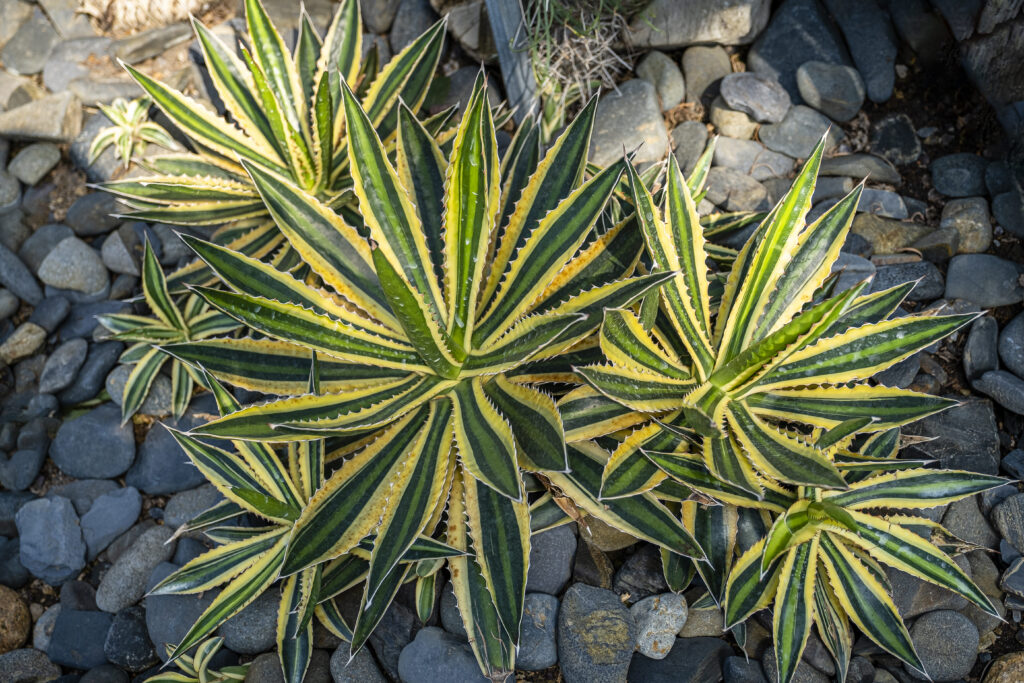
Split Rock succulents, also known as Pleiospilos nelii, are unique and fascinating plants that belong to the Aizoaceae family. Native to South Africa, these small succulents are characterized by their thick, fleshy leaves and distinct split appearance, which gives them their common name. Split Rock succulents are popular among collectors and enthusiasts for their unusual growth patterns and striking colors.
We will explore whether Split Rock succulents can develop wrinkles and what factors may contribute to this phenomenon. We will delve into the natural aging process of these plants and discuss the potential causes of wrinkles. Additionally, we will provide tips on how to care for Split Rock succulents in order to maintain their vibrant and healthy appearance. So, if you're curious about the wrinkling phenomenon in Split Rock succulents, keep reading to discover more!
- No, split rock succulents do not develop wrinkles
- Wrinkles are not a common characteristic of split rock succulents
- Split rock succulents maintain a smooth texture and appearance
- The unique shape of split rock succulents does not allow for wrinkles to form
- Even with age, split rock succulents do not show signs of wrinkling
- The thick leaves of split rock succulents prevent wrinkles from forming
- Proper care and watering can help prevent any potential wrinkling in split rock succulents
- Wrinkles are more common in other types of succulents, not split rock succulents
- If wrinkles do appear on split rock succulents, it may indicate a health issue or improper care
No, split rock succulents do not develop wrinkles
Split rock succulents, also known as Pleiospilos nelii, are unique and captivating plants that originate from South Africa. With their unusual appearance, resembling small rocks with a split in the middle, they have become a popular choice among succulent enthusiasts.
One common question that arises when it comes to split rock succulents is whether they develop wrinkles. It is understandable to wonder about this, considering their unique texture and shape. However, the answer is no, split rock succulents do not develop wrinkles.
Unlike some other succulent varieties that may develop wrinkles due to underwatering or other environmental factors, split rock succulents have a unique adaptation that helps them withstand challenging conditions.
The Adaptation of Split Rock Succulents
Split rock succulents have evolved to survive in arid and harsh environments. Their wrinkled appearance, which is often mistaken for actual wrinkles, is actually a specialized adaptation that allows them to store water for extended periods.
 Top Low Maintenance Indoor Succulent Plants for Easy Care and Beauty
Top Low Maintenance Indoor Succulent Plants for Easy Care and BeautyThe split in their center serves as a natural water reservoir, allowing the plant to store water during periods of rainfall or abundant moisture. As the plant goes through drier conditions, it utilizes the stored water to sustain itself, preventing the development of wrinkles typically associated with dehydration.
This unique adaptation is what makes split rock succulents so resilient and able to thrive in arid regions. It's important to understand that the wrinkles apparent in other succulent varieties are not a sign of aging but rather a sign of water stress.
How to Care for Split Rock Succulents
While split rock succulents do not develop wrinkles, they still require proper care to thrive. Here are a few tips to ensure their well-being:
- Light: Split rock succulents prefer bright, indirect sunlight. Place them near a window where they can receive ample light without being exposed to direct sunlight.
- Watering: Water your split rock succulent sparingly. Allow the soil to dry out completely between waterings to mimic their natural habitat. Overwatering can lead to root rot and other issues.
- Soil: Use well-draining soil specifically formulated for succulents. This will help prevent waterlogging and ensure the plant's roots have access to the necessary oxygen.
- Temperature: Split rock succulents thrive in warm temperatures ranging between 70-80°F (21-27°C). Avoid exposing them to extreme cold or frost.
By following these care tips, you can help your split rock succulents thrive and maintain their unique appearance without the development of wrinkles.
Wrinkles are not a common characteristic of split rock succulents
Split rock succulents, also known as Pleiospilos nelii, are unique and fascinating plants that are prized for their unusual appearance. These succulents are native to South Africa and are known for their split, rock-like appearance, which gives them their common name.
One of the most distinctive features of split rock succulents is their thick, fleshy leaves that are covered in small, warty bumps. These bumps, also known as tubercles, give the leaves a textured and wrinkled appearance. However, it's important to note that these wrinkles are a natural characteristic of the plant and should not be confused with actual wrinkles or signs of aging.
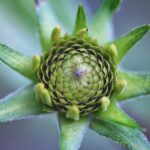 Can You Mist Succulents Every Day? What You Need to Know
Can You Mist Succulents Every Day? What You Need to KnowContrary to popular belief, split rock succulents do not develop wrinkles as they age. The wrinkled appearance of their leaves is a result of their growth pattern and adaptation to arid environments. These plants have evolved to store water in their leaves, which allows them to survive in harsh conditions with limited rainfall.
As the plant grows, it will produce new leaves from the center, pushing the older leaves outwards. Over time, the older leaves may become more wrinkled as they are pushed to the edges of the plant. However, this wrinkling is not a sign of aging or deterioration.
It's important to properly care for split rock succulents to ensure they maintain their unique appearance and thrive. These plants require well-draining soil and should be watered sparingly, as overwatering can lead to root rot. They also prefer bright, indirect light and should be protected from extreme temperatures.
Wrinkles are not a common characteristic of split rock succulents. The wrinkled appearance of their leaves is a natural feature and should not be mistaken for signs of aging. With proper care, these plants can bring years of enjoyment and admiration with their unique and captivating appearance.
Split rock succulents maintain a smooth texture and appearance
Split rock succulents, also known as Pleiospilos nelii, are unique plants that are prized for their distinctive appearance. These succulents are native to South Africa and are characterized by their compact size and interesting leaf formations.
One of the notable features of split rock succulents is their smooth texture and appearance. Unlike some other succulents that may develop wrinkles or dimples, split rock succulents maintain a consistently smooth surface.
 Epsom Salt for Succulent Plants: A Complete Guide
Epsom Salt for Succulent Plants: A Complete GuideThis smooth texture is a result of the plant's specialized adaptation to its arid environment. Split rock succulents have thick, fleshy leaves that store water, allowing them to survive in dry conditions. The lack of wrinkles or creases in their leaves helps to prevent water loss through evaporation.
Furthermore, the unique leaf formations of split rock succulents also contribute to their smooth appearance. The leaves are fused together, forming a split or cleft in the center. This split gives the plant its name and adds to its overall aesthetics.
While other succulents may develop wrinkles or folds as a response to environmental factors or aging, split rock succulents maintain their smooth appearance throughout their lifespan.
It's important to note that although split rock succulents do not naturally develop wrinkles, improper care and growing conditions can still affect their overall health and appearance. Factors such as overwatering, insufficient sunlight, or lack of proper drainage can lead to issues like yellowing or shriveling of the leaves. Therefore, providing the right care and environment is crucial for the well-being of split rock succulents.
Split rock succulents are known for their smooth texture and appearance, which adds to their charm and desirability among succulent enthusiasts. Understanding their unique adaptations and providing proper care will help ensure these plants thrive and maintain their attractive, wrinkle-free appearance.
The unique shape of split rock succulents does not allow for wrinkles to form
When it comes to succulents, split rock plants are undoubtedly one of the most fascinating and peculiar varieties out there. With their distinctive split appearance resembling a rock crevice, these plants have captured the attention of succulent enthusiasts worldwide. One question that often arises among succulent lovers is whether split rock succulents can develop wrinkles.
 Is It Normal for My Succulent to Have an Unusual Growth?
Is It Normal for My Succulent to Have an Unusual Growth?The short answer is no. Due to their unique shape and structure, split rock succulents do not develop wrinkles like other succulent varieties. Let's delve into the reasons behind this phenomenon.
The Anatomy of Split Rock Succulents
Split rock succulents, also known by their scientific name Pleiospilos nelii, have a specialized anatomy that sets them apart from other succulents. They comprise two distinct fleshy halves, resembling two halves of a split rock or a pair of clenched hands. These halves are connected by a thin strip of tissue, creating a gap in the center.
Unlike other succulents that have plump leaves or stems, split rock succulents have a compact and thick body, giving them their distinctive rock-like appearance. Their outer layer is covered in a waxy cuticle, which serves as a protective barrier against water loss and harsh environmental conditions.
The Role of Wrinkles in Succulents
Wrinkles in succulents are typically a response to water stress or environmental factors. When succulents experience drought or receive insufficient water, their plump leaves or stems start to lose moisture, causing them to shrink and develop wrinkles. These wrinkles act as a mechanism to reduce the surface area exposed to the environment, minimizing water loss.
Why Split Rock Succulents Don't Wrinkle
The unique shape of split rock succulents plays a significant role in preventing the formation of wrinkles. Unlike other succulents with a larger surface area, split rock succulents have a compact and tightly packed body, with minimal exposed areas. This compactness allows them to retain water more efficiently, reducing the likelihood of water loss and subsequent wrinkling.
Additionally, the waxy cuticle covering the outer layer of split rock succulents acts as an extra protective layer, further preventing water loss and maintaining their plump appearance.
Maintaining the Health of Split Rock Succulents
While split rock succulents may not develop wrinkles, it is still essential to provide them with proper care to ensure their overall health and longevity. Here are a few tips for maintaining the well-being of your split rock succulents:
 Can Succulents Die from Overwatering and Lack of Sunlight?
Can Succulents Die from Overwatering and Lack of Sunlight?- Light: Place your split rock succulents in a bright location with indirect sunlight. Avoid exposing them to intense or prolonged direct sunlight, which can cause sunburn.
- Watering: Water your split rock succulents sparingly, allowing the soil to dry out completely between waterings. Overwatering can lead to root rot, which can be detrimental to the plant.
- Soil: Use a well-draining soil mix specifically formulated for succulents. This helps prevent waterlogged roots and allows for proper airflow.
- Temperature: Split rock succulents thrive in warm temperatures ranging between 65°F to 80°F (18°C to 27°C). Protect them from frost and extreme cold conditions.
- Fertilizing: Feed your split rock succulents with a diluted succulent fertilizer during their active growing season, typically in spring and summer.
By following these guidelines and understanding the unique characteristics of split rock succulents, you can enjoy their captivating appearance without worrying about wrinkles.
Remember, split rock succulents are fascinating plants that add a touch of uniqueness to any succulent collection. Their rock-like appearance and ability to thrive in arid conditions make them a remarkable choice for succulent enthusiasts.
Even with age, split rock succulents do not show signs of wrinkling
Split rock succulents, also known as Pleiospilos nelii, are unique and fascinating plants. They belong to the Aizoaceae family and are native to the arid regions of South Africa. These succulents are renowned for their distinct split appearance, resembling tiny rocks with a central fissure. While they may appear wrinkled to some, it is important to note that this is a natural characteristic of the plant and not a sign of aging or deterioration.
Unlike human skin, split rock succulents do not develop wrinkles as they age. Instead, their unique split pattern remains consistent throughout their lifespan. The split is actually an adaptation that allows the plant to survive in its natural habitat by minimizing water loss. The two fleshy halves of the plant act as a protective shield, reducing surface area exposed to the harsh environment.
Furthermore, the thick and succulent leaves of split rock succulents store water, enabling them to withstand prolonged periods of drought. This ability to retain moisture is crucial for their survival in arid conditions. As a result, the plant maintains its plump and taut appearance, even as it grows older.
It is worth noting that split rock succulents require specific care to thrive and maintain their unique beauty. Providing them with well-draining soil, adequate sunlight, and occasional watering will ensure their optimal growth and longevity. However, it is important to strike a balance, as overwatering can lead to root rot and other issues.
 Trimming Succulents: Can I Safely Prune the Top of an Overgrown Plant?
Trimming Succulents: Can I Safely Prune the Top of an Overgrown Plant?Split rock succulents are remarkable plants that do not develop wrinkles with age. Their distinctive split appearance is a natural adaptation to arid conditions, allowing them to conserve water and survive in harsh environments. By providing these plants with the care they need, you can enjoy their stunning beauty for many years to come.
The thick leaves of split rock succulents prevent wrinkles from forming
Split rock succulents, also known as Pleiospilos nelii, are unique and fascinating plants that belong to the Aizoaceae family. They are native to South Africa and are known for their distinctive appearance, resembling small rocks or pebbles. One common question that succulent enthusiasts often ask is whether split rock succulents can develop wrinkles on their leaves.
The answer is no. Unlike other succulents that may develop wrinkles on their leaves due to water stress or other environmental factors, split rock succulents have thick, plump leaves that are highly resistant to wrinkling. These leaves are specifically adapted to store water and withstand periods of drought, making them incredibly resilient.
The thick leaves of split rock succulents serve as a protective barrier, preventing excessive water loss and maintaining the plant's hydration levels. This adaptation also helps them thrive in their natural arid habitats, where water availability can be limited.
Moreover, split rock succulents have a unique growth pattern that contributes to their wrinkle-free leaves. The leaves of these plants are fused together at the base, forming a cleft or split in the center. This distinctive feature gives the plant its common name and adds to its overall charm.
Factors that contribute to healthy split rock succulents
While split rock succulents are naturally resistant to developing wrinkles, it is important to provide them with the right care to ensure their overall health and vitality.
 Can Succulents Survive a Freeze Unprotected?
Can Succulents Survive a Freeze Unprotected?- Light: These succulents thrive in bright, indirect light. Placing them near a sunny window or providing them with artificial grow lights can help them flourish.
- Water: Split rock succulents have low water requirements and are susceptible to root rot if overwatered. It is best to allow the soil to dry out between waterings and avoid getting water on the leaves.
- Soil: Well-draining soil is essential for these plants. A mixture of cactus potting mix and perlite or pumice can provide the ideal growing medium.
- Temperature: Split rock succulents prefer warm temperatures ranging from 65°F to 80°F (18°C to 27°C). They should be protected from extreme cold or frost.
- Fertilizer: These plants have low fertilizer requirements. A diluted, balanced succulent fertilizer can be applied sparingly during the growing season.
By providing the right conditions and care, split rock succulents can thrive and maintain their beautiful, wrinkle-free leaves. These unique plants are a wonderful addition to any succulent collection and are sure to attract attention with their fascinating appearance.
Proper care and watering can help prevent any potential wrinkling in split rock succulents
Split rock succulents, also known as Pleiospilos nelii, are unique and fascinating plants that can add a touch of exotic beauty to any indoor or outdoor space. These succulents are native to South Africa and are incredibly resilient, making them a popular choice among plant enthusiasts.
One common concern that many split rock succulent owners have is whether or not these plants can develop wrinkles. While it is true that split rock succulents can develop wrinkles under certain conditions, proper care and watering can help prevent this issue.
Understanding the Causes of Wrinkling
Wrinkling in split rock succulents typically occurs due to overwatering or underwatering. These plants have adapted to survive in arid environments by storing water in their leaves. When they receive too much water, the excess moisture causes their leaves to swell and eventually wrinkle. On the other hand, underwatering can also lead to wrinkling as the plant becomes dehydrated and starts to shrink.
It's important to strike a balance when it comes to watering your split rock succulents. Aim to provide them with enough water to keep their leaves plump but not so much that they become waterlogged. A good rule of thumb is to water these succulents thoroughly and then allow the soil to dry out completely before watering again.
Tips for Preventing Wrinkling
To help prevent wrinkles from appearing on your split rock succulents, consider the following tips:
- Use well-draining soil: Ensure that the soil you use for your split rock succulents is well-draining. This will help prevent water from pooling around the roots and causing issues.
- Provide adequate sunlight: Split rock succulents thrive in bright, indirect sunlight. Place them near a south-facing window or provide them with artificial grow lights to ensure they receive enough light.
- Monitor watering carefully: Pay close attention to the moisture levels in the soil and adjust your watering schedule accordingly. Remember, it's better to underwater than overwater these plants.
- Avoid misting: While misting can be beneficial for some succulents, it's best to avoid misting split rock succulents as it can lead to excess moisture and potential wrinkling.
By following these guidelines and providing your split rock succulents with the care they need, you can help prevent any potential wrinkling issues. Remember, these plants are resilient and adaptable, so with proper care, they can thrive and continue to grace your space with their unique beauty.
 Protecting Succulents: Tips for Cold Weather Survival
Protecting Succulents: Tips for Cold Weather SurvivalWrinkles are more common in other types of succulents, not split rock succulents
When it comes to succulents, one might wonder if split rock succulents can develop wrinkles. It's a common misconception, as split rock succulents are actually known for their unique and distinct appearance that sets them apart from other succulent varieties.
Split rock succulents, also known as Lithops, are native to the arid regions of southern Africa. These fascinating plants are known for their leaf-like bodies that blend seamlessly with their surroundings, making them excellent at camouflage. However, wrinkles are not a characteristic typically associated with split rock succulents.
Wrinkles in succulents are more commonly found in other types, such as the popular jade plant or certain species of echeveria. These wrinkles often occur due to a variety of factors, including overwatering, under-watering, or exposure to extreme temperatures. In contrast, split rock succulents have evolved to store water in their thick, fleshy leaves, which helps them survive in harsh desert conditions.
Factors that contribute to split rock succulents' unique appearance:
- Leaf patterns: Split rock succulents exhibit intricate patterns on their leaves, resembling the cracks and crevices found on rocks. These patterns vary from plant to plant, making each one truly unique.
- Color variations: Split rock succulents can display an array of colors, ranging from shades of green to gray, brown, and even reddish hues. These colors help them blend into their natural environments.
- Size and shape: Split rock succulents often have a compact and rounded shape, mimicking the appearance of pebbles or small rocks. They typically stay relatively small, with an average height of around 1-2 inches.
So, if you're fascinated by succulents and their unique characteristics, it's important to note that wrinkles are not typically associated with split rock succulents. Instead, these remarkable plants captivate with their leaf patterns, color variations, and overall rock-like appearance. They are a fantastic addition to any succulent collection and are sure to spark conversation among plant enthusiasts.
If wrinkles do appear on split rock succulents, it may indicate a health issue or improper care
Split rock succulents, also known as Pleiospilos nelii, are fascinating plants that are native to South Africa. These unique succulents are known for their distinctive appearance, with their thick, fleshy leaves that resemble split rocks or pebbles. They are a popular choice among succulent enthusiasts due to their unusual beauty and low-maintenance nature.
 Using Regular Miracle Gro Fertilizer: Is it Suitable for Succulents?
Using Regular Miracle Gro Fertilizer: Is it Suitable for Succulents?However, if wrinkles start to appear on the leaves of your split rock succulents, it might be a cause for concern. Wrinkles can be an indication of a health issue or improper care. It is essential to understand the possible reasons behind this phenomenon and take appropriate measures to address the problem.
Possible Causes of Wrinkles on Split Rock Succulents
1. Underwatering: One of the most common reasons for wrinkles on split rock succulents is underwatering. These plants store water in their leaves to survive in arid conditions. If they are not receiving enough water, their leaves can become dehydrated, resulting in wrinkles. Ensure that you water your split rock succulents thoroughly but allow the soil to dry out between waterings.
2. Overwatering: On the other hand, overwatering can also lead to wrinkles on split rock succulents. These plants are adapted to survive in dry environments, and excessive moisture can cause their leaves to become mushy and wrinkled. Make sure you provide adequate drainage and only water when the soil is completely dry.
3. Insufficient sunlight: Split rock succulents require plenty of bright, indirect sunlight to thrive. If they are not receiving enough light, their leaves may become elongated and wrinkled. Place your plants near a sunny window or provide artificial grow lights to ensure they receive the necessary light for healthy growth.
4. Temperature extremes: Extreme temperatures, both hot and cold, can stress split rock succulents and lead to wrinkling of their leaves. Avoid placing them in areas with fluctuating temperatures or drafts. Maintain a temperature range of 60-80°F (15-26°C) for optimal growth.
How to Treat Wrinkles on Split Rock Succulents
If you notice wrinkles on your split rock succulents, it is essential to take prompt action to restore their health:
- Adjust watering: Evaluate your watering routine and ensure you are neither underwatering nor overwatering your plants. Stick to a consistent watering schedule and monitor the moisture level of the soil.
- Provide adequate sunlight: Check the location of your split rock succulents and ensure they are receiving enough bright, indirect sunlight. Consider moving them to a sunnier spot or using artificial grow lights if necessary.
- Regulate temperature: Keep your plants away from extreme temperature conditions and maintain a stable environment within the recommended temperature range.
- Inspect for pests: Examine your plants for any signs of pests, such as mealybugs or aphids, which can cause stress and lead to wrinkling. Treat any infestations promptly with appropriate insecticides.
- Provide proper nutrition: Ensure your split rock succulents are receiving adequate nutrients by fertilizing them with a balanced succulent fertilizer during the growing season. Follow the recommended dosage instructions to avoid over-fertilization.
By addressing the potential causes and taking appropriate corrective measures, you can help your split rock succulents regain their health and prevent further wrinkling of their leaves. Remember, proper care and attention are crucial for the well-being of these unique and captivating plants.
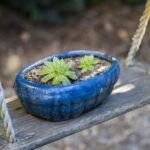 Succulent Care on Wood: A Guide to Proper Maintenance
Succulent Care on Wood: A Guide to Proper MaintenanceFrequently Asked Questions
Can Split Rock Succulents Develop Wrinkles?
No, split rock succulents do not develop wrinkles. They have a unique texture on their surface, but wrinkles are not a natural characteristic of these plants.
If you want to read more articles similar to Can Split Rock Succulents Develop Wrinkles?, you can visit the Care and Maintenance category.

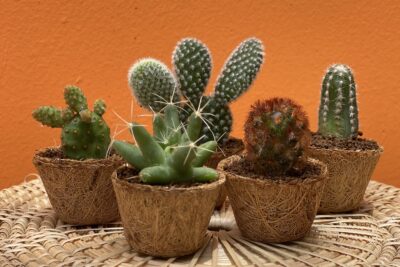
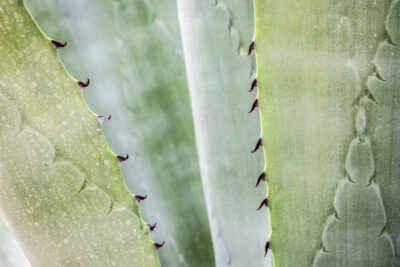



You Must Read